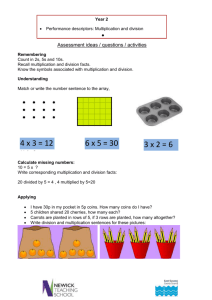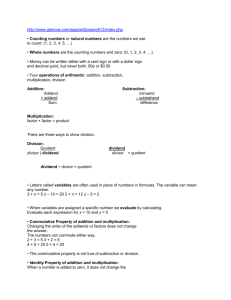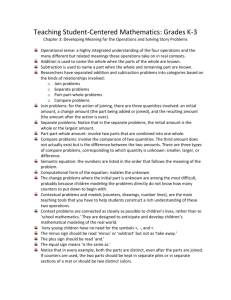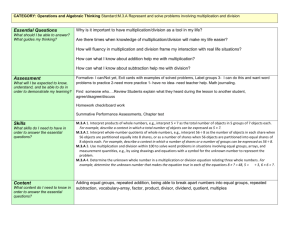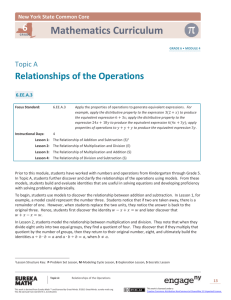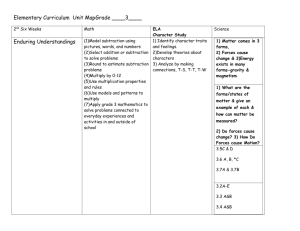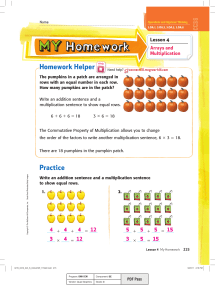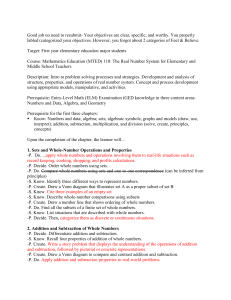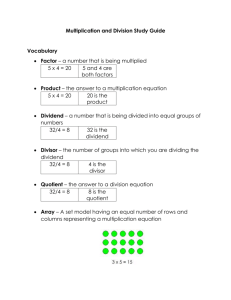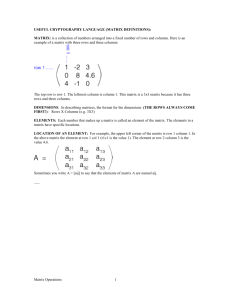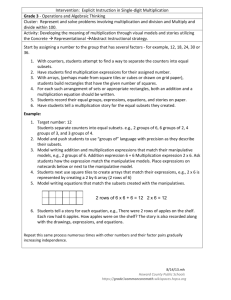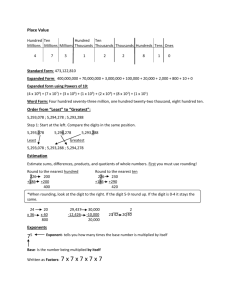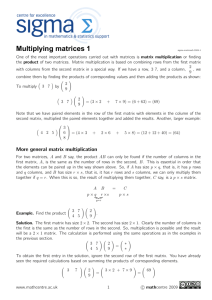Section 3.3
advertisement
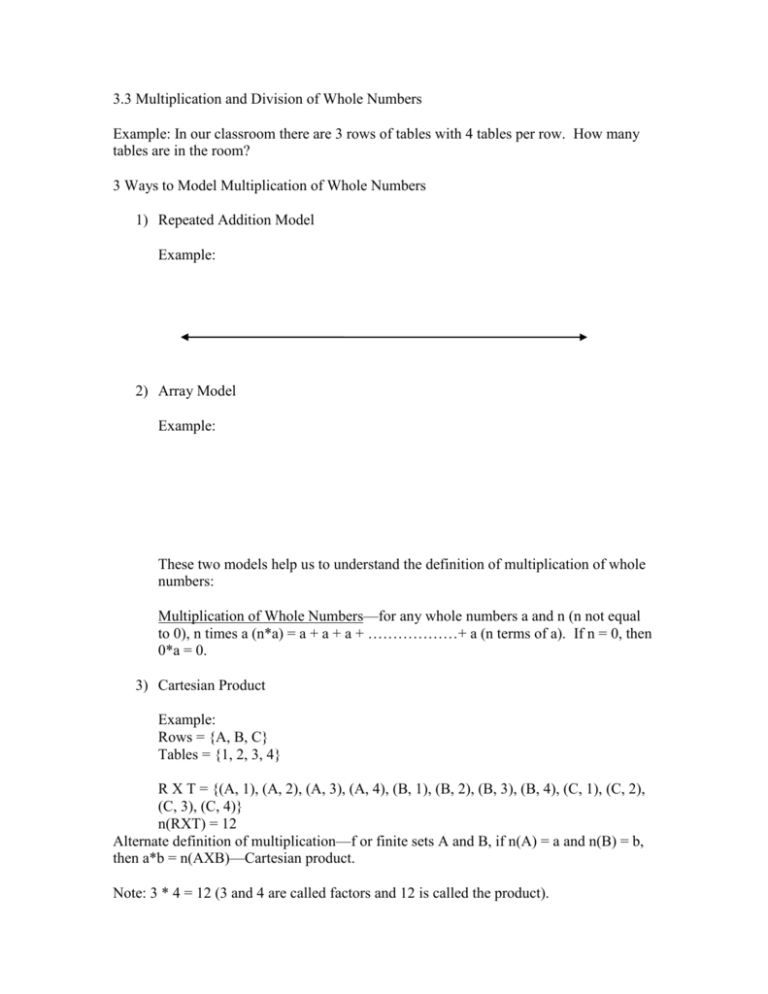
3.3 Multiplication and Division of Whole Numbers
Example: In our classroom there are 3 rows of tables with 4 tables per row. How many
tables are in the room?
3 Ways to Model Multiplication of Whole Numbers
1) Repeated Addition Model
Example:
2) Array Model
Example:
These two models help us to understand the definition of multiplication of whole
numbers:
Multiplication of Whole Numbers—for any whole numbers a and n (n not equal
to 0), n times a (n*a) = a + a + a + ………………+ a (n terms of a). If n = 0, then
0*a = 0.
3) Cartesian Product
Example:
Rows = {A, B, C}
Tables = {1, 2, 3, 4}
R X T = {(A, 1), (A, 2), (A, 3), (A, 4), (B, 1), (B, 2), (B, 3), (B, 4), (C, 1), (C, 2),
(C, 3), (C, 4)}
n(RXT) = 12
Alternate definition of multiplication—f or finite sets A and B, if n(A) = a and n(B) = b,
then a*b = n(AXB)—Cartesian product.
Note: 3 * 4 = 12 (3 and 4 are called factors and 12 is called the product).
Properties of Multiplication of Whole Numbers
1) Closure
If a and b are whole numbers, then a*b is a unique whole number.
2) Commutative
Example:
If a and b are whole numbers, then a*b = b*a.
3) Associative
Example:
If a, b, and c are whole numbers, then (a*b)*c = a*(b*c).
4) Identity
Example:
If a is a whole number, then a*1 = a = 1*a.
5) Zero product of whole numbers
Example:
If a is a whole number, then a*0 = 0 = 0*a.
Example: Use the array model to illustrate 3(2 + 5)—the distributive property.
If a, b, and c are whole numbers, then a*(b+ c) = a*b + a*c.
Examples:
1) 14(12)
2) 5(2 +x)
Division of Whole Numbers
Example: We have 12 tables in our room. There are 3 rows of tables. How many tables
do we have per row?
3 Models for Whole Number Subtraction
1) Set Partition Model
We need to divide the 12 tables into 3 equal sets:
2) Missing Factor Model
3 * ? = 12
We have to figure out how many should go in each set so that 3 times that number
would give us 12.
Definition: Division of Whole Numbers—for any whole numbers a and b (b not
equal to 0), a/b = c iff c is the unique whole number such that b*c = a.
Example 15/5 = 3 since 3*5 = 15
Why is 3*5 = 15? Because 5 + 5 + 5 = 15
Note: a/b = c (a is the dividend, b is the divisor, and c is the quotient)
3) Repeated Subtraction Model
Example: We have 12 cookies and we want to put 3 in each box. How many
boxes do we need?
Is division of whole numbers closed? NO
Why not? 13/5 is not a whole number (for example).
Now, what if my problem read like this: suppose I had 13 pieces of candy to share with 5
students—each student would get 2 pieces and 3 would remain with me—3 is the
remainder. I could write this: 13 = 5*2 + 3.
Division Algorithm: Given any whole numbers a and b (b not equal to 0)—a/b = quotient
+ remainder OR a = b*q + r.
Why can b not equal 0?
Consider 3/0—0*c = 3—this is impossible!!!!!!!!!!
n/0 is undefined
However, 0/3—3*c = 0—this means that c is 0.
So, 0/n = 0
Order of Operations (PEMDAS)
MD—in order from left to right
AS—in order from left to right
Examples:
1) 3 + 4*2
2) 42/3*7
3) (5 + 4 + 9)/3
